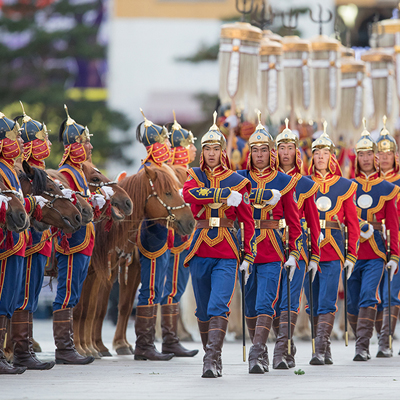
Mongolian Foods and Drinks
Hospitality Mongolia
The hospitality of Mongolia is characterized by a deep-rooted tradition of welcoming guests with warmth and generosity. It reflects a nomadic culture where guests are treated with utmost respect and offered food, shelter, and friendship. Mongolian hospitality emphasizes sharing what little one has, demonstrating kindness to strangers, and honoring guests as a sign of goodwill and community spirit.
Popular dishes of Mongolia
Mongolian cuisine reflects its nomadic traditions and harsh climate, featuring hearty and meat-centric dishes. One of the most famous dishes is "Buuz," steamed dumplings filled with minced meat, typically mutton or beef, and flavored with onion and garlic. Another staple is "Khorkhog," where meat, usually mutton, is cooked with vegetables and hot stones in a sealed container, imparting a unique smoky flavor. "Tsuiwan" is a noodle dish with meat and vegetables in a savory broth, often enjoyed as a comforting meal in colder months. Dairy products like "Aaruul" (dried curds) and "Airag" (fermented mare's milk) are also essential components of the Mongolian diet.
Milk products
Mongolian milk products play a vital role in the traditional nomadic diet. They include airag, a fermented drink made from mare's milk known for its tangy flavor and slight alcoholic content. Aaruul, another staple, is dried curd often flavored with various ingredients like sugar or herbs. Byaslag, a type of cheese typically made from yak or cow milk, completes the array of dairy products central to Mongolian cuisine and culture.
Mongolian Beverages
Mongolian beverages often reflect the nomadic lifestyle and harsh climate of the region. Airag, a traditional fermented drink, is made from mare's milk and is a staple among the Mongolian nomads, known for its tangy taste and slight alcoholic content. Suutei tsai, or Mongolian salty milk tea, is another popular beverage, enjoyed for its warming properties, especially during cold winters. Both beverages hold cultural significance and are integral to Mongolian hospitality and daily life.
Recipes of Mongolian Foods
Mongolian cuisine is characterized by hearty dishes influenced by the country's nomadic heritage and harsh climate. Traditional main foods often feature meat, particularly mutton, beef, and sometimes horse meat, cooked with vegetables such as onions and carrots. Staple dishes include buuz (steamed dumplings filled with meat), khuushuur (deep-fried meat pies), and tsuivan (noodles stir-fried with meat and vegetables). These dishes reflect Mongolia's emphasis on sustenance and practicality, catering to the dietary needs of its historically nomadic population
Restaurant Types Mongolia
In Mongolia, restaurants vary widely from traditional eateries serving local dishes like buuz and khuushuur to modern establishments offering international cuisine. Ger (yurt) restaurants provide an authentic experience, serving traditional meals in a nomadic-style setting. In urban areas like Ulaanbaatar, there are also upscale restaurants catering to diverse tastes with a range of cuisines, including Mongolian, Russian, Chinese, and Western options. Dining out in Mongolia offers a blend of cultural immersion and culinary exploration.










.jpg)


















